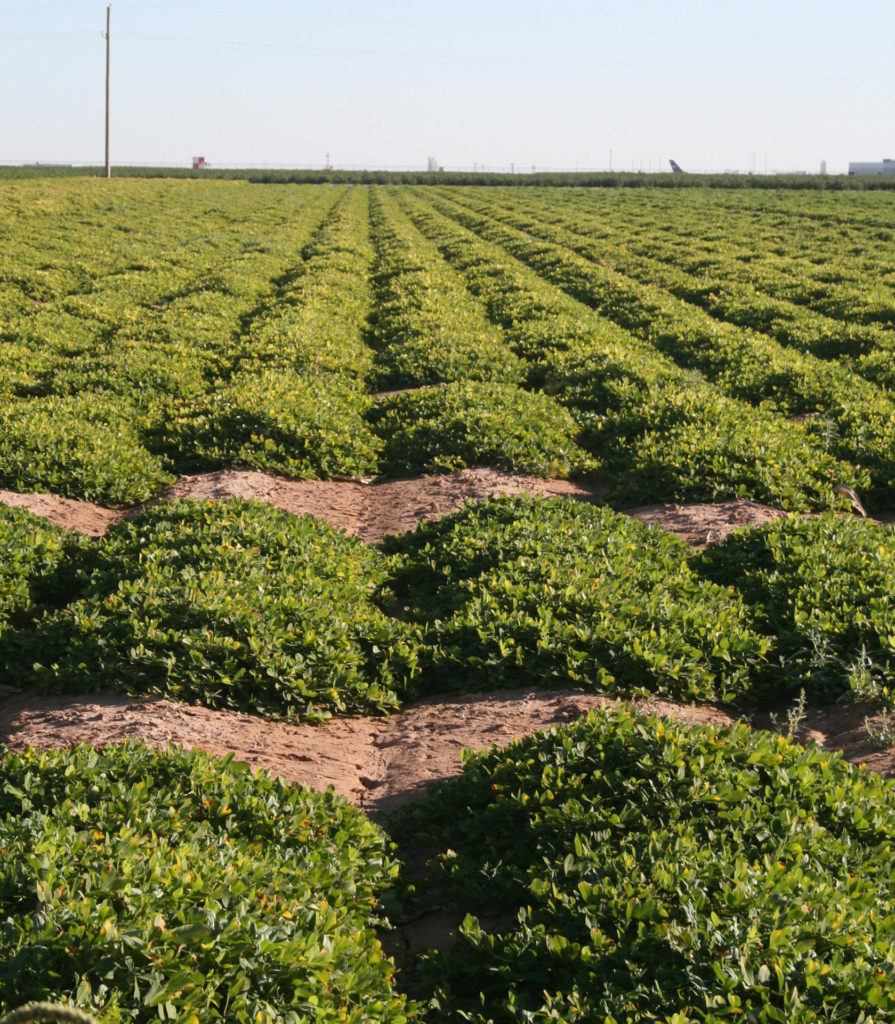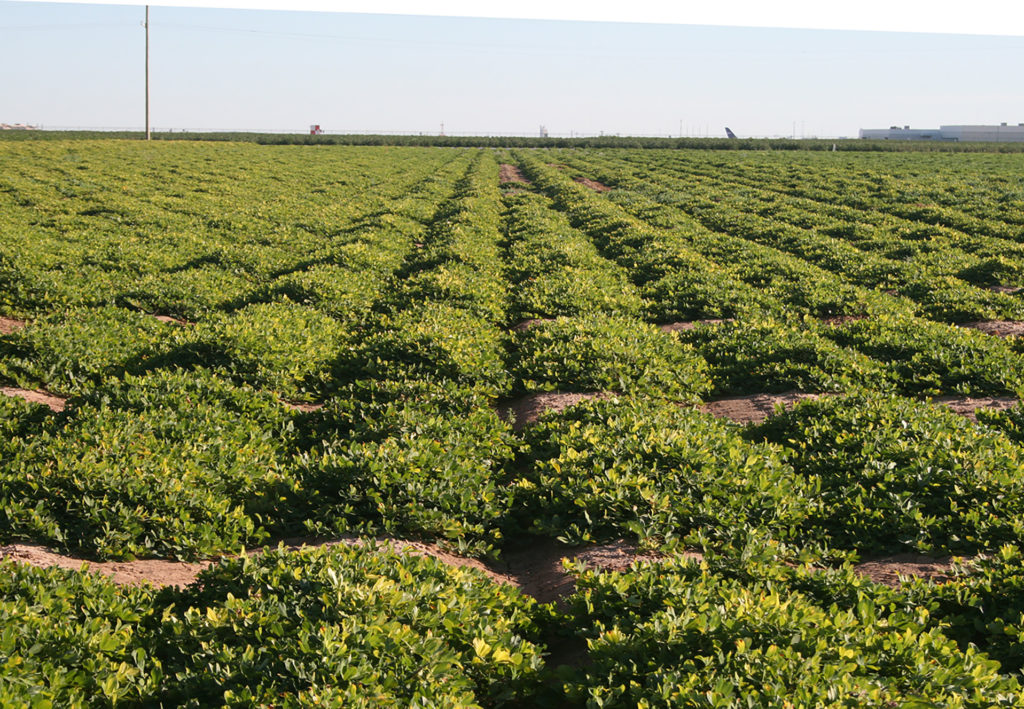New Tamrun peanut varieties announced
Texas A&M AgriLife breeding program offers earlier-maturing, higher-yielding varieties
The Texas A&M AgriLife Research peanut breeding program has announced the release of two new varieties, Tamrun OL18L and Tamrun OL19, for the West Texas and South Texas production regions.
Both varieties are high-yielding, high-oleic, early maturing, runner-type peanuts, said Mark Burow, Ph.D., AgriLife Research peanut geneticist with a joint appointment at Texas Tech University in Lubbock.
The goal was to develop a peanut that allows for earlier harvest than is possible with current cultivars to reduce the potential for off-flavors associated with immaturity at harvest. Additional goals were improving yield, grade and other agronomic characteristics when compared to Tamrun OL12 and Tamnut OL06.

“They’re early maturing varieties, they have a better edible seed quality, and they’re high oleic, which all our Texas A&M AgriLife varieties released for the last 20 years have been,” Burow said. “So, they have a longer shelf life and are better for the coronary health of the consumer.”
He explained that standard runner varieties of peanuts don’t mature out very well in West Texas. If they are immature and dry down sitting in the sun on a hot day, they might develop off-flavors – it’s called a fruity fermented flavor and “that’s not very good tasting.”
He and other researchers have noticed that the earlier-maturing peanuts tend to have less trouble with the fruity, fermented flavor.
“Flavor panels found that these two varieties have a good flavor, and we hope these will have less trouble with off flavors too,” Burow said.
Developing new varieties to meet producers’ needs
Development of a variety can take 10 years or more. Burow said during that time Tamrun OL18L and Tamrun OL19 were tested against other varieties at multiple locations, anywhere from two to five locations per year for a number of years.
“And they’ve done very well for yield,” he said. “One of the important things is to have a variety with good yields for growers. One of the concerns was something that matures early may yield less. But these, especially Tamrun OL18L, actually yielded at the top of the test when we compared them to other commercial varieties.”
He said tests of Tamrun OL18L were yielding 475 to 830 pounds an acre more than some others, including Georgia 09-B and Tamrun OL11. Tamrun OL19 didn’t yield quite as high, but it has a somewhat smaller seed size that’s a little closer to the industry standard, which used to be Florunner.
“TamrunOL19 has a somewhat smaller seed that might be preferred by some of the processors, but OL18 has somewhat larger seeds, which might be the disadvantage for processors,” Burow said. “But yields a little bit better, which I think growers would appreciate.”
Typically, runner peanuts go toward the peanut butter market, he said, although some do go into confectionery products such as in candy bars with peanuts on the outside of them or in something like peanut candies. The smaller seed size is preferred for those.
Burow bred these varieties in cooperation with other Texas A&M AgriLife peanut breeders, including from College Station, Mike Baring, Ph.D., now retired, and from Stephenville, Charles Simpson, Ph.D., retired but still active, and John Cason, Ph.D.
“The original crosses were made in Lubbock, along with the statistical analysis, but it’s been grown in and tested in West, Central and South Texas. So it’s a cooperative effort among the Texas A&M AgriLife locations,” Burow said.
A lifetime of breeding peanuts
Burow has almost 30 years of peanut experience. He has been breeding peanuts in the Lubbock region since 2001. Before that, he worked in College Station as a post-doctorate researcher for about five years and at the University of Georgia for two years.
“Because of the length of time it takes to get a new variety developed, we have to anticipate things a little bit,” he said. “We try to address what the growers need now, and certainly that’s very important for us. But we also have to think of what they need five, 10, 15 years out in the future. And so, we try to project that and work on developing things based on that.”
Some traits they are working on now include higher yield — that’s always important — and tolerance to water deficit — that’s a very big one because water levels are declining. Other traits include resistance to disease including sclerotinia blight, root-knot nematodes and leaf spots.
He explained there are four different market classes of peanuts — runner, Virginia, Valencia and Spanish — and the peanut breeding team works on all of them because all can be and are grown in Texas.
“You never know when you make a cross if something will be good enough to be released. So, we’re working on all four market classes at the moment,” Burow said.
He said he expects to be releasing a Virginia variety later this year.
“After the Virginia, I think a runner variety that grows well under limited amounts of water will be our next release,” Burow said. “If a grower doesn’t have enough water, they still want a peanut that can yield reasonably well with reduced irrigation water.”
A general rule of thumb is peanuts require about 20 to 28 inches of water as they grow. The hope is that growers can get maybe half of that from rainfall and the rest from irrigation. He said while the amount of rainfall varies from year to year, all peanuts in Texas have to be grown under irrigation.
To develop the “less thirsty” peanut variety, Burow said they have been growing experimental varieties in June, July and August and give them one-third of the normal water in that time, or 6 to 10 inches less than normal.
“Our testing gives them about 16 inches during the growing season,” Burow said. “We wouldn’t expect growers to use this little water because the yields are low, but it does allow us to test the peanuts under a lot of stress to find which ones do best with less water.
“We use water deficit in June through August for two reasons,” he said. “One is that’s when it’s hottest and growers are harder pressed to pump enough water. And second, it’s because studies have shown that the amount of genetic variability in peanuts is greatest during the mid-season, so the thought is that we can make the best gain in that time of year also.”
What’s next?
Just because a plant variety has been released, doesn’t mean producers can grow it this season, Burow said.
He said the results have gone through the Texas A&M AgriLife’s Plant Review Committee. This process requires breeders to outline why it’s better than other materials out there.
But now, the material has to be increased.
“If you figure we start with one acre of seed, each cycle can only produce about 20 acres from that, and it’ll take two to three years until there’s any significant amount of seed available commercially,” he said.
From the breeders’ fields, the seed will now go to Texas A&M Foundation Seed Service in Vernon, where arrangements will be made for the seed increase, said Robert Brummett, senior licensing manager for Texas A&M AgriLife’s Intellectual Property and Commercialization office.
When foundation seed has been increased sufficiently, it will then be available for sale to companies that have licensed rights to produce and sell seed peanuts to growers, Brummett said. Texas A&M AgriLife’s Intellectual Property and Commercialization office manages the licensing of peanut varieties and coordinates those licensing efforts with Foundation Seed.



